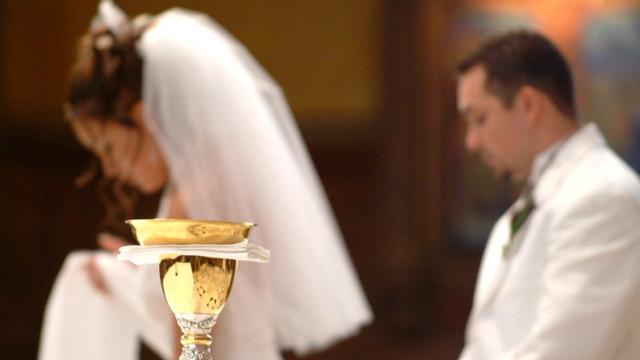“Congregations erect a sacred canopy of meaning over the great chapters of family life: birth, childrearing, and marriage.” — W. Bradford Wilcox[1]
For all its progress and possibilities, our modern world has difficulty seeing beyond itself. Every age has to struggle against its blind spots. In ancient Rome, for example, the span of a person’s influence was reckoned at 100 years. Within that horizon individuals could remember two generations back and care for two generations forward. Then, as the custom went, that influence stopped, and a new century, with new people and new concerns, would reset itself.[2] But lasting societies need a broader vision.

The pull of the present is strong, but so are the tugs to the past and the future. Family and faith — our two great bridges beyond the here and now — stretch far past 100 years, in both directions, and expand the purpose and meaning of our lives.
None of us is born a mere individual. We come to this world with a network of pre-existing ties, bonds and obligations. These family relationships shape our worldviews, instil our values and form our identities. And families of all kinds thrive when they join a community of believers. The benefits go both ways — churches strengthen families, and families strengthen churches. Working together, family and faith reinforce norms of right and wrong, teach us how to love our neighbors and provide a support base where children and parents navigate life’s challenges. In other words, family and faith keep us from being alone. They enlarge our circles of responsibility beyond the self and help us turn strangers into friends. Families then pass this spiritual and social capital across generations.
Marshaling extensive social science research, author Mary Eberstadt shows how closely these forces are intertwined. “Family and faith are the invisible double helix of society,” she writes, “two spirals that when linked to one another can effectively reproduce, but whose strength and momentum depend on one another.”[3]
This partnership can be seen at church on Sunday afternoons. Eberstadt points to broad sociological agreement that participation in the family rituals of “being married and having children is linked to higher levels of churchgoing and other types of religious practice.”[4] Another factor is the effect children have on the religious lives of their parents. Sociologist W. Bradford Wilcox puts it simply: “Children drive parents to church.”[5] It’s a common story — kids grow up in a church, leave home for college and drift from the faith, only to return when they get married and have children. What explains this phenomenon? The decisions we make about our deepest beliefs and closest relationships are never simple. But Wilcox adds an important insight: “The arrival of a child can awaken untapped reserves of love, recognition of the transcendent, and concern for the good life.”[6] These things matter because family and religion are among the most basic human institutions. When together, they connect society; when apart, society weakens.
The sacred relationships between kin and church, church and kin, tie us to the past, present and future. Such continuity helps us situate ourselves in this big universe. We find out who we are. The poet Wendell Berry gives expression to these aspirations: “The marriage of two lovers joins them to one another, to forebears, to descendants, to the community, to Heaven and earth. It is the fundamental connection without which nothing holds.”[7]
The fortunes of family and faith will continue to ebb and flow, as they have in various periods throughout history, but experience shows they will do so joining hands. As the one rises or falls, so will the other. The course of history is not predetermined; it is chosen. And those choices have long trajectories — much too long, indeed, to fit in 100 years.
[1] W. Bradford Wilcox, “As the Family Goes,” First Things, May 2007.
[2] See Remi Brague, “The Impossibility of Secular Society,” First Things, Oct. 2013.
[3] Mary Eberstadt, How the West Really Lost God, 2013, 22.
[4] Eberstadt, How the West Really Lost God, 93.
[5] Wilcox, “As the Family Goes.”
[6] Wilcox, “As the Family Goes.”
[7] Wendell Berry, Sex, Economy, Freedom, and Community, 1992.